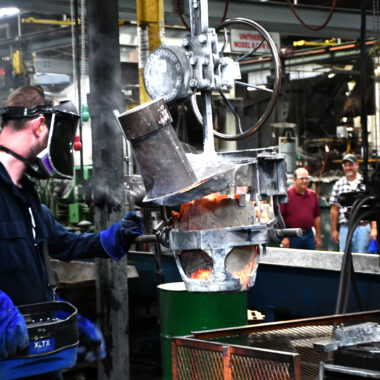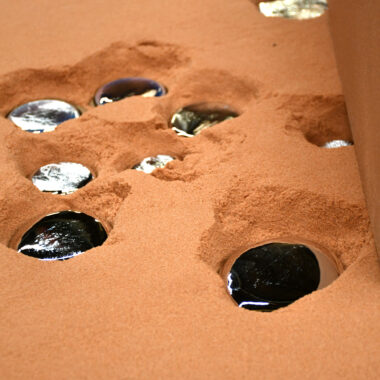Unveiling the Artistry: Understanding About Aluminum Casting
Unveiling the Artistry: Understanding About Aluminum Casting
Blog Article
Crafting Excellence: Exactly How to Accomplish High-Quality Aluminum Castings Whenever
In the realm of light weight aluminum spreading, the quest of perfection is a continual trip that needs a thorough strategy and an eager understanding of the complexities entailed. Accomplishing regular high-quality aluminum castings requires a comprehensive understanding of the procedures, from picking the appropriate alloy to performing exact mold and mildew styles and meticulously managing spreading criteria. Nonetheless, real proficiency depends on the capability to implement these components flawlessly to produce remarkable spreadings each time. As we check out the ins and outs of crafting excellence in light weight aluminum spreadings, uncovering the vital methods and strategies that cause flawless outcomes comes to be critical for those pursuing quality in this specific field.
Comprehending Light Weight Aluminum Spreading Procedures
Light weight aluminum casting processes, vital in the manufacturing sector, include the detailed change of liquified aluminum into solid kinds with a series of thoroughly controlled actions. Recognizing these processes is vital to attaining high-quality aluminum spreadings continually - about aluminum casting. The primary methods used in aluminum spreading are die casting, sand casting, and investment casting

Each of these procedures has its benefits and is selected based on variables like complexity, quantity, and preferred surface of the aluminum casting. about aluminum casting. Understanding the ins and outs of these approaches is critical for makers intending to produce high-quality light weight aluminum spreadings continually
Picking the Right Light Weight Aluminum Alloy
Choosing the ideal light weight aluminum alloy is a vital decision in the production of top notch light weight aluminum spreadings. When choosing an aluminum alloy for spreading, it is essential to think about the particular demands of the application to guarantee optimum performance.
One of the most commonly used light weight aluminum alloys for spreading is A356 - about aluminum casting. For applications needing high stamina, 7075 light weight aluminum alloy is a prominent selection due to its exceptional strength-to-weight proportion.
In addition to mechanical buildings, factors to consider such as expense, schedule, and post-casting procedures should additionally affect the option of the ideal light weight aluminum alloy. By very carefully examining these aspects, producers can guarantee the manufacturing of premium aluminum spreadings that satisfy the wanted specifications.
Executing Appropriate Mold And Mildew Design
Establishing an efficient mold and mildew design is essential for making sure the successful manufacturing of high-grade light weight aluminum spreadings. Proper mold and mildew layout plays a considerable role in accomplishing the preferred attributes of the final product. To implement a successful mold and mildew style, variables such as material flow, cooling down prices, and part geometry have to be carefully considered.
One secret facet of mold layout is ensuring appropriate dental filling and solidification of the aluminum within the mold cavity. This entails developing jogger and gating systems that facilitate smooth metal circulation and avoid flaws such as air entrapment or insufficient dental filling. Additionally, including air conditioning channels into the mold and mildew style assists control solidification prices and decrease the threat of porosity or shrinking flaws.

Controlling Casting Parameters

Ensuring Post-Casting High Quality Checks
To maintain the premium quality of aluminum castings, extensive post-casting quality checks are important. After the spreading process is finished, it is essential to make certain that the end products satisfy the wanted her response specs and requirements. Among the key top quality checks entails checking the surface area coating of the spreadings to identify any type of flaws such as porosity, cracks, or surface area abnormalities. This aesthetic evaluation is typically supplemented by non-destructive screening methods like ultrasonic screening or dye penetrant examination to detect inner imperfections that might compromise the honesty of the spreading.
Dimensional accuracy is an additional vital aspect that has to be verified during post-casting quality checks. Measurements of key dimensions and tolerances need to be taken to confirm that the spreadings comply with the called for specs. Furthermore, mechanical properties such as hardness, tensile strength, and impact resistance might require to be reviewed via product screening to make sure that the spreadings possess the required strength and resilience for their intended application.
Conclusion
In verdict, attaining high-grade light weight aluminum spreadings needs look at this web-site a detailed understanding of the spreading processes, selecting the appropriate alloy, making mold and mildews successfully, managing casting criteria thoroughly, and carrying out post-casting quality checks carefully. By complying with these actions, suppliers can regularly generate light weight aluminum moved here castings that meet the highest possible criteria of top quality and efficiency.
Attaining constant premium aluminum spreadings demands a comprehensive understanding of the processes, from picking the suitable alloy to carrying out precise mold and mildew designs and thoroughly controlling spreading parameters. The key techniques made use of in aluminum spreading are die spreading, sand spreading, and investment spreading.
Investment spreading, also understood as accuracy casting, includes creating wax patterns that are coated in ceramic to create molds.Choosing the ideal aluminum alloy is an essential decision in the manufacturing of high-quality aluminum spreadings.Ensuring accurate control over spreading criteria is important for keeping consistency and quality in aluminum spreading manufacturing.
Report this page